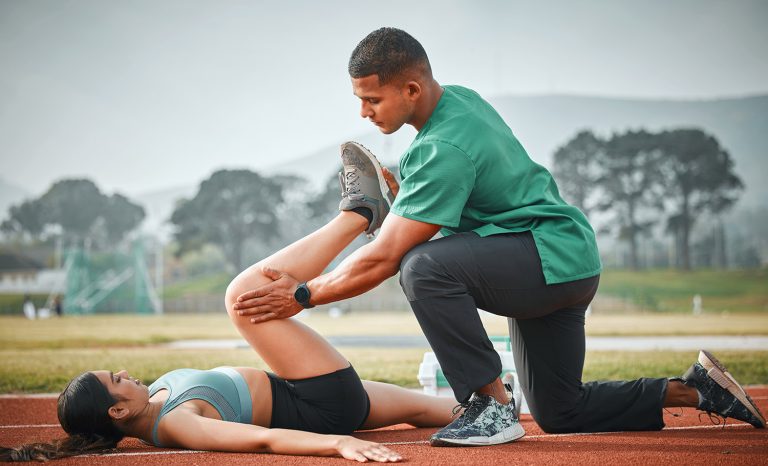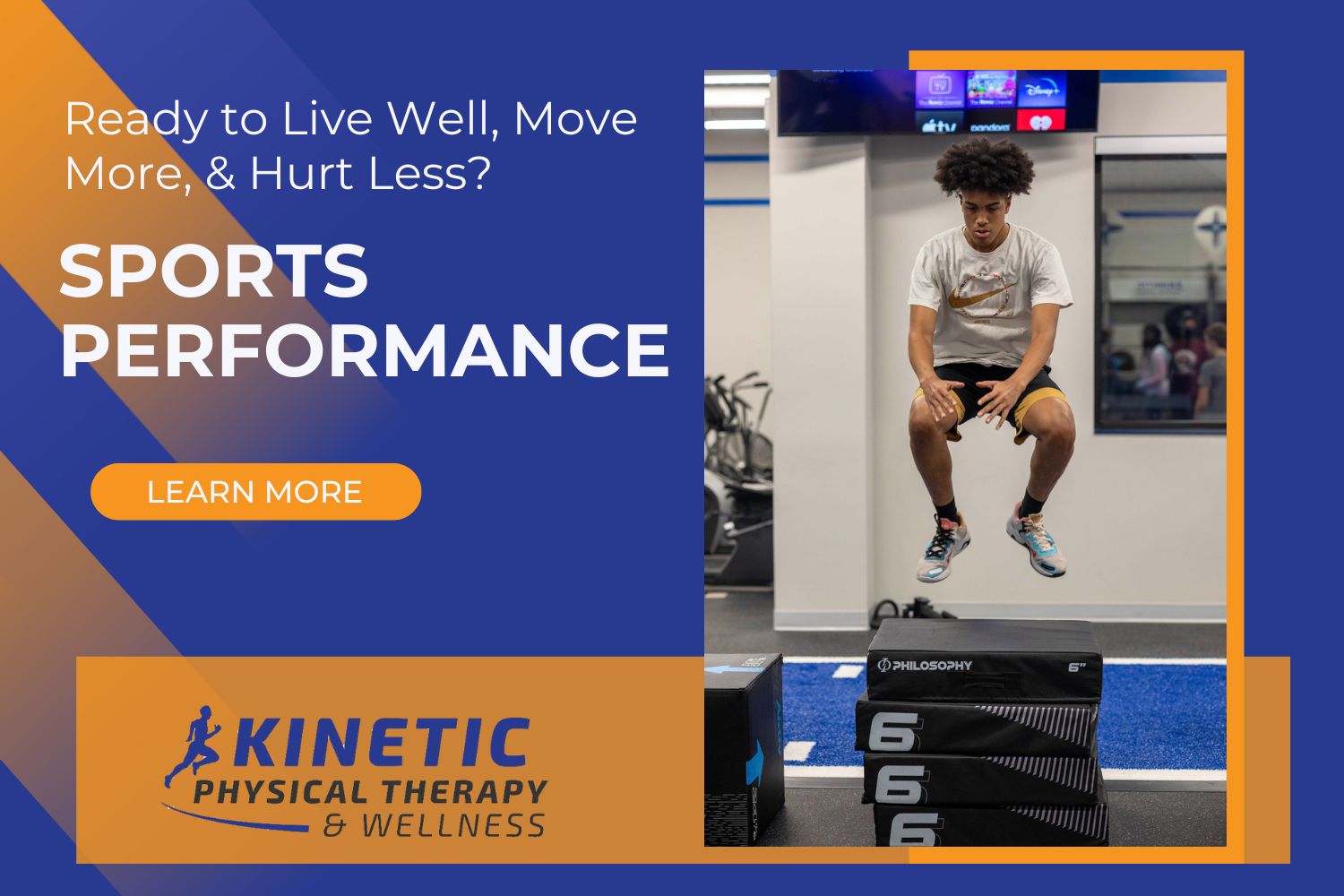

Maximizing Athletic Performance
How Sports Therapy Can Give You the Competitive Edge
Athletic performance isn’t just about raw talent; it’s about optimizing every aspect of your physical and mental condition to perform at your best. This is where sports therapy comes into play. Tailored sports therapy sessions are designed for maximizing athletic performance by enhancing strength, flexibility, and endurance, giving athletes the competitive edge they need to excel in their respective fields. In this comprehensive blog post, we will delve into how sports therapy can transform your athletic performance and provide essential tips from professional therapists on injury prevention.
Understanding the Role That Sports Therapy Plays in Maximizing Athletic Performance
Sports therapy is a specialized field that focuses on the prevention, treatment, and rehabilitation of sports-related injuries. It involves a combination of physical therapy techniques, exercise physiology, and sports science to help athletes achieve peak performance. The goal is not only to treat injuries but also to enhance an athlete’s overall physical condition, ensuring they perform at their best while minimizing the risk of injury.
Enhancing Strength
Strength is a fundamental component in maximizing athletic performance. It enables athletes to generate power, maintain stability, and perform movements with precision. Sports therapy focuses on tailored strength training programs that target specific muscle groups essential for an athlete’s sport. These programs are designed based on an athlete’s individual needs, taking into account their strengths, weaknesses, and goals.
Personalized Strength Training Programs
Sports therapists work closely with athletes to develop personalized strength training programs. These programs are tailored to address the specific demands of the athlete’s sport, ensuring that the exercises target the relevant muscle groups.
Functional Strength Exercises
Functional strength exercises mimic the movements performed in an athlete’s sport. By incorporating these exercises into their training regimen, athletes can improve their functional strength, leading to better performance on the field or court.
Progressive Overload
Progressive overload is a key principle in strength training. Sports therapists gradually increase the intensity of exercises to ensure continuous improvement in strength. This approach helps athletes break through performance plateaus and achieve new levels of strength.
Improving Flexibility
Flexibility is crucial for athletes as it allows for a greater range of motion, reduces the risk of injury, and enhances overall performance. Sports therapy includes stretching routines and flexibility exercises designed to improve an athlete’s flexibility.
Dynamic Stretching
Dynamic stretching involves performing controlled movements that take muscles through their full range of motion. This type of stretching is often incorporated into warm-up routines to prepare the body for physical activity.
Static Stretching
Static stretching involves holding a stretch for a prolonged period. This type of stretching is typically performed after workouts to enhance flexibility and aid in muscle recovery.
Foam Rolling and Myofascial Release
Foam rolling and myofascial release techniques are used to release tension in muscles and improve flexibility. Sports therapists often incorporate these techniques into an athlete’s routine to prevent muscle tightness and improve overall flexibility.
Boosting Endurance
Endurance is the ability to sustain prolonged physical activity. It is a critical component of athletic performance, especially in sports that require continuous movement and effort. Sports therapy focuses on improving cardiovascular endurance and muscular endurance.
Cardiovascular Conditioning
Sports therapists design cardiovascular conditioning programs that include aerobic and anaerobic exercises. These programs help athletes improve their cardiovascular endurance, allowing them to sustain high levels of activity for extended periods.
Interval Training
Interval training involves alternating between periods of high-intensity exercise and low-intensity recovery. This type of training is effective in improving both aerobic and anaerobic endurance, making it a valuable component of sports therapy.
Resistance Training for Muscular Endurance
Resistance training exercises are tailored to enhance muscular endurance. These exercises involve performing high repetitions with moderate weights to improve the muscles’ ability to sustain prolonged activity.
Injury Prevention in Sports: Essential Tips from Professional Therapists
Injury prevention is a critical aspect of sports therapy. Professional therapists provide athletes with essential tips and strategies to minimize the risk of injury and ensure they remain in peak condition.
Proper Warm-Up and Cool-Down
A proper warm-up and cool-down routine is essential for injury prevention. Warming up prepares the body for physical activity by increasing blood flow to the muscles, while cooling down helps reduce muscle soreness and aids in recovery.
Correct Technique and Form
Using correct technique and form during exercises and sports activities is crucial for injury prevention. Sports therapists educate athletes on the proper mechanics of movements to minimize strain on the body and reduce the risk of injury.
Gradual Progression
Athletes should avoid making sudden increases in the intensity, duration, or frequency of their training. Gradual progression allows the body to adapt to increased demands, reducing the risk of overuse injuries.
Rest and Recovery
Rest and recovery are essential components of any training program. Adequate rest allows the body to repair and strengthen itself, reducing the risk of injury. Sports therapists emphasize the importance of incorporating rest days into an athlete’s training schedule.
Listening to the Body
Athletes should listen to their bodies and be aware of any signs of pain or discomfort. Ignoring these signs can lead to serious injuries. Sports therapists encourage athletes to seek treatment at the first sign of an issue to prevent it from becoming more severe.
Proper Nutrition and Hydration
Nutrition and hydration play a vital role in injury prevention and overall performance. Athletes should maintain a balanced diet and stay hydrated to support their training and recovery.
Sports therapy is a powerful tool for maximizing athletic performance. By enhancing strength, flexibility, and endurance, tailored sports therapy sessions provide athletes with the competitive edge they need to excel. Additionally, professional therapists offer valuable tips and strategies for injury prevention, ensuring athletes remain in peak condition. Whether you’re a professional athlete or a weekend warrior, incorporating sports therapy into your training regimen can help you achieve your performance goals and stay injury-free.
Please Share
categories
Recent Posts

Maximizing Athletic Performance
How Sports Therapy Can Give You the Competitive Edge
Athletic performance isn’t just about raw talent; it’s about optimizing every aspect of your physical and mental condition to perform at your best. This is where sports therapy comes into play. Tailored sports therapy sessions are designed for maximizing athletic performance by enhancing strength, flexibility, and endurance, giving athletes the competitive edge they need to excel in their respective fields. In this comprehensive blog post, we will delve into how sports therapy can transform your athletic performance and provide essential tips from professional therapists on injury prevention.
Understanding the Role That Sports Therapy Plays in Maximizing Athletic Performance
Sports therapy is a specialized field that focuses on the prevention, treatment, and rehabilitation of sports-related injuries. It involves a combination of physical therapy techniques, exercise physiology, and sports science to help athletes achieve peak performance. The goal is not only to treat injuries but also to enhance an athlete’s overall physical condition, ensuring they perform at their best while minimizing the risk of injury.
Enhancing Strength
Strength is a fundamental component in maximizing athletic performance. It enables athletes to generate power, maintain stability, and perform movements with precision. Sports therapy focuses on tailored strength training programs that target specific muscle groups essential for an athlete’s sport. These programs are designed based on an athlete’s individual needs, taking into account their strengths, weaknesses, and goals.
Personalized Strength Training Programs
Sports therapists work closely with athletes to develop personalized strength training programs. These programs are tailored to address the specific demands of the athlete’s sport, ensuring that the exercises target the relevant muscle groups.
Functional Strength Exercises
Functional strength exercises mimic the movements performed in an athlete’s sport. By incorporating these exercises into their training regimen, athletes can improve their functional strength, leading to better performance on the field or court.
Progressive Overload
Progressive overload is a key principle in strength training. Sports therapists gradually increase the intensity of exercises to ensure continuous improvement in strength. This approach helps athletes break through performance plateaus and achieve new levels of strength.
Improving Flexibility
Flexibility is crucial for athletes as it allows for a greater range of motion, reduces the risk of injury, and enhances overall performance. Sports therapy includes stretching routines and flexibility exercises designed to improve an athlete’s flexibility.
Dynamic Stretching
Dynamic stretching involves performing controlled movements that take muscles through their full range of motion. This type of stretching is often incorporated into warm-up routines to prepare the body for physical activity.
Static Stretching
Static stretching involves holding a stretch for a prolonged period. This type of stretching is typically performed after workouts to enhance flexibility and aid in muscle recovery.
Foam Rolling and Myofascial Release
Foam rolling and myofascial release techniques are used to release tension in muscles and improve flexibility. Sports therapists often incorporate these techniques into an athlete’s routine to prevent muscle tightness and improve overall flexibility.
Boosting Endurance
Endurance is the ability to sustain prolonged physical activity. It is a critical component of athletic performance, especially in sports that require continuous movement and effort. Sports therapy focuses on improving cardiovascular endurance and muscular endurance.
Cardiovascular Conditioning
Sports therapists design cardiovascular conditioning programs that include aerobic and anaerobic exercises. These programs help athletes improve their cardiovascular endurance, allowing them to sustain high levels of activity for extended periods.
Interval Training
Interval training involves alternating between periods of high-intensity exercise and low-intensity recovery. This type of training is effective in improving both aerobic and anaerobic endurance, making it a valuable component of sports therapy.
Resistance Training for Muscular Endurance
Resistance training exercises are tailored to enhance muscular endurance. These exercises involve performing high repetitions with moderate weights to improve the muscles’ ability to sustain prolonged activity.
Injury Prevention in Sports: Essential Tips from Professional Therapists
Injury prevention is a critical aspect of sports therapy. Professional therapists provide athletes with essential tips and strategies to minimize the risk of injury and ensure they remain in peak condition.
Proper Warm-Up and Cool-Down
A proper warm-up and cool-down routine is essential for injury prevention. Warming up prepares the body for physical activity by increasing blood flow to the muscles, while cooling down helps reduce muscle soreness and aids in recovery.
Correct Technique and Form
Using correct technique and form during exercises and sports activities is crucial for injury prevention. Sports therapists educate athletes on the proper mechanics of movements to minimize strain on the body and reduce the risk of injury.
Gradual Progression
Athletes should avoid making sudden increases in the intensity, duration, or frequency of their training. Gradual progression allows the body to adapt to increased demands, reducing the risk of overuse injuries.
Rest and Recovery
Rest and recovery are essential components of any training program. Adequate rest allows the body to repair and strengthen itself, reducing the risk of injury. Sports therapists emphasize the importance of incorporating rest days into an athlete’s training schedule.
Listening to the Body
Athletes should listen to their bodies and be aware of any signs of pain or discomfort. Ignoring these signs can lead to serious injuries. Sports therapists encourage athletes to seek treatment at the first sign of an issue to prevent it from becoming more severe.
Proper Nutrition and Hydration
Nutrition and hydration play a vital role in injury prevention and overall performance. Athletes should maintain a balanced diet and stay hydrated to support their training and recovery.
Sports therapy is a powerful tool for maximizing athletic performance. By enhancing strength, flexibility, and endurance, tailored sports therapy sessions provide athletes with the competitive edge they need to excel. Additionally, professional therapists offer valuable tips and strategies for injury prevention, ensuring athletes remain in peak condition. Whether you’re a professional athlete or a weekend warrior, incorporating sports therapy into your training regimen can help you achieve your performance goals and stay injury-free.
Please Share






